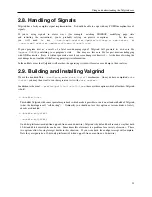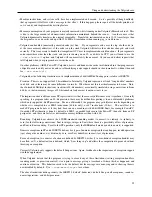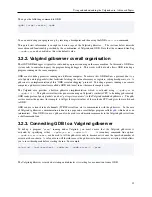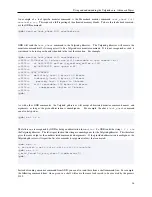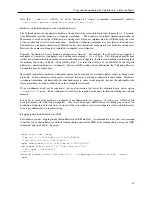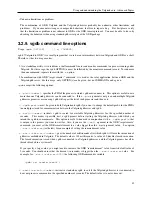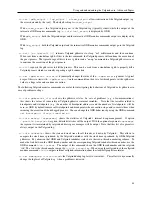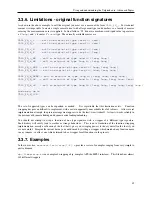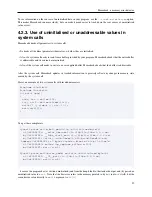
Using and understanding the Valgrind core: Advanced Topics
vgdb --pid=3145 leak_check full reachable any
vgdb --pid=3145 l f r a
Note that the Valgrind gdbserver automatically continues the execution of the program after a standalone invocation of
vgdb. Monitor commands sent from GDB do not cause the program to continue: the program execution is controlled
explicitly using GDB commands such as "continue" or "next".
3.2.6. Valgrind gdbserver thread information
Valgrind’s gdbserver enriches the output of the GDB
info threads
command with Valgrind-specific information.
The operating system’s thread number is followed by Valgrind’s internal index for that thread ("tid") and by the
Valgrind scheduler thread state:
(gdb) info threads
4 Thread 6239 (tid 4 VgTs_Yielding)
0x001f2832 in _dl_sysinfo_int80 () from /lib/ld-linux.so.2
* 3 Thread 6238 (tid 3 VgTs_Runnable)
make_error (s=0x8048b76 "called from London") at prog.c:20
2 Thread 6237 (tid 2 VgTs_WaitSys)
0x001f2832 in _dl_sysinfo_int80 () from /lib/ld-linux.so.2
1 Thread 6234 (tid 1 VgTs_Yielding)
main (argc=1, argv=0xbedcc274) at prog.c:105
(gdb)
3.2.7. Examining and modifying Valgrind shadow
registers
When the option
--vgdb-shadow-registers=yes
is given, the Valgrind gdbserver will let GDB examine
and/or modify Valgrind’s shadow registers.
GDB version 7.1 or later is needed for this to work. For x86 and
amd64, GDB version 7.2 or later is needed.
For each CPU register, the Valgrind core maintains two shadow register sets. These shadow registers can be accessed
from GDB by giving a postfix
s1
or
s2
for respectively the first and second shadow register. For example, the x86
register
eax
and its two shadows can be examined using the following commands:
(gdb) p $eax
$1 = 0
(gdb) p $eaxs1
$2 = 0
(gdb) p $eaxs2
$3 = 0
(gdb)
37

